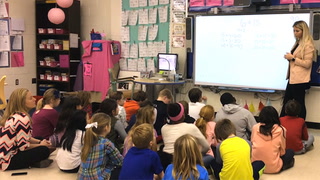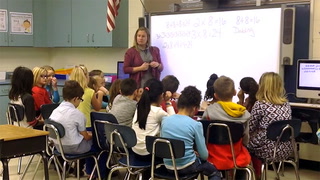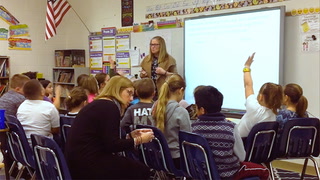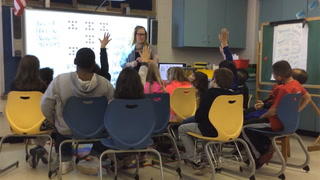Series Math Routines with Kristin Gray: Third Grade: Multiplication Number Talk: Third Grade
Math.3.OA.B.5
| Common core State Standards
- Math: Math
- 3: Grade 3
- OA: Operations & Algebraic Thinking
- B: Understand properties of multiplication and the relationship between multiplication and division
-
5:
Apply properties of operations as strategies to multiply and divide. (Students need not use formal terms for these properties.) Examples: If 6 × 4 = 24 is known, then 4 × 6 = 24 is also known. (Commutative property of multiplication.) 3 × 5 × 2 can be found by 3 × 5 = 15, then 15 × 2 = 30, or by 5 × 2 = 10, then 3 × 10 = 30. (Associative property of multiplication.) Knowing that 8 × 5 = 40 and 8 × 2 = 16, one can find 8 × 7 as 8 × (5 + 2) = (8 × 5) + (8 × 2) = 40 + 16 = 56. (Distributive property.)
Math.3.NBT.A.3
Common core State Standards
- Math: Math
- 3: Grade 3
- NBT: Numbers & Operations in Base Ten
- A: Use place value understanding and properties of operations to perform multi-digit arithmetic
-
3:
Multiply one-digit whole numbers by multiples of 10 in the range 10-90 (e.g., 9 × 80, 5 × 60) using strategies based on place value and properties of operations.
Save to My Resources
PLEASE CREATE A NEW ACCOUNT OR LOG IN TO ACCESS THIS CONTENT
Enjoy your first video for free. Subscribe for unlimited access.
Have questions about subscribing?
Click Here to learn more about individual subscriptions.
Click Here to learn more about School and Institution access.
Number Talks encourage students to think flexibly about the operations and their properties as they solve problems mentally.
Discussion and Supporting Materials
School Details
Shields (Richard A.) Elementary School910 Shields Avenue
Lewes DE 19958
Population: 560
Data Provided By:

Teachers
Kristin Gray
Math / Kindergarten 1 2 3 4 5 / Teacher
Jennifer Guido
Newest
|
4 MIN
|
5 MIN
|
5 MIN
UNCUT CLASSROOMS
| TCHERS' VOICE
English Language Arts















13 Comments
Theresa Young Apr 28, 2018 3:45pm
Kristin Gray Dec 17, 2017 7:20am
Joseph Espinosa Dec 16, 2017 10:22pm
Kristin Gray Dec 16, 2017 7:46pm
Joseph Espinosa Dec 16, 2017 7:37pm